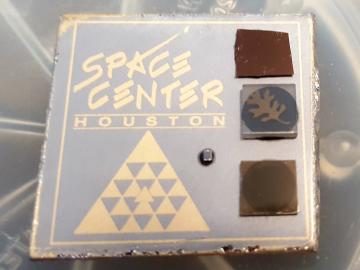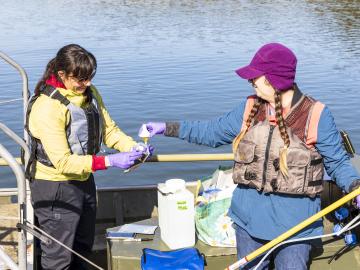
Filter News
Area of Research
- Advanced Manufacturing (2)
- Biology and Environment (9)
- Building Technologies (1)
- Computational Biology (1)
- Computational Engineering (1)
- Computer Science (3)
- Electricity and Smart Grid (1)
- Energy Science (19)
- Fusion and Fission (4)
- Isotopes (9)
- Materials (7)
- Materials for Computing (5)
- Mathematics (1)
- National Security (11)
- Neutron Science (4)
- Quantum information Science (2)
- Sensors and Controls (1)
- Supercomputing (15)
News Type
News Topics
- (-) Advanced Reactors (3)
- (-) Composites (6)
- (-) Computer Science (34)
- (-) Cybersecurity (5)
- (-) Grid (12)
- (-) Isotopes (10)
- (-) Partnerships (2)
- (-) Physics (5)
- (-) Space Exploration (7)
- 3-D Printing/Advanced Manufacturing (22)
- Artificial Intelligence (12)
- Big Data (10)
- Bioenergy (29)
- Biology (39)
- Biomedical (11)
- Biotechnology (6)
- Buildings (18)
- Chemical Sciences (9)
- Clean Water (13)
- Coronavirus (12)
- Critical Materials (5)
- Energy Storage (18)
- Environment (64)
- Exascale Computing (6)
- Frontier (5)
- Fusion (7)
- High-Performance Computing (25)
- Hydropower (8)
- Irradiation (1)
- ITER (4)
- Machine Learning (6)
- Materials (40)
- Materials Science (20)
- Mathematics (1)
- Mercury (4)
- Microscopy (16)
- Nanotechnology (10)
- National Security (14)
- Neutron Science (17)
- Nuclear Energy (7)
- Polymers (4)
- Quantum Computing (7)
- Quantum Science (12)
- Security (4)
- Simulation (5)
- Statistics (1)
- Summit (9)
- Transportation (19)
Media Contacts

To study how space radiation affects materials for spacecraft and satellites, Oak Ridge National Laboratory scientists sent samples to the International Space Station. The results will inform design of radiation-resistant magnetic and electronic systems.

Researchers at Oak Ridge National Laboratory are using a novel approach in determining environmental impacts to aquatic species near hydropower facilities, potentially leading to smarter facility designs that can support electrical grid reliability.

A new version of the Energy Exascale Earth System Model, or E3SM, is two times faster than an earlier version released in 2018.

The world is full of “huge, gnarly problems,” as ORNL research scientist and musician Melissa Allen-Dumas puts it — no matter what line of work you’re in. That was certainly the case when she would wrestle with a tough piece of music.

A discovery by Oak Ridge National Laboratory researchers may aid the design of materials that better manage heat.

Energy Secretary Jennifer Granholm visited ORNL on Nov. 22 for a two-hour tour, meeting top scientists and engineers as they highlighted projects and world-leading capabilities that address some of the country’s most complex research and technical challenges.

A team led by the U.S. Department of Energy’s Oak Ridge National Laboratory demonstrated the viability of a “quantum entanglement witness” capable of proving the presence of entanglement between magnetic particles, or spins, in a quantum material.

Oak Ridge National Laboratory, University of Tennessee and University of Central Florida researchers released a new high-performance computing code designed to more efficiently examine power systems and identify electrical grid disruptions, such as

Oak Ridge National Laboratory researchers have created a technology that more realistically emulates user activities to improve cyber testbeds and ultimately prevent cyberattacks.

Staff at Oak Ridge National Laboratory organized transport for a powerful component that is critical to the world’s largest experiment, the international ITER project.


